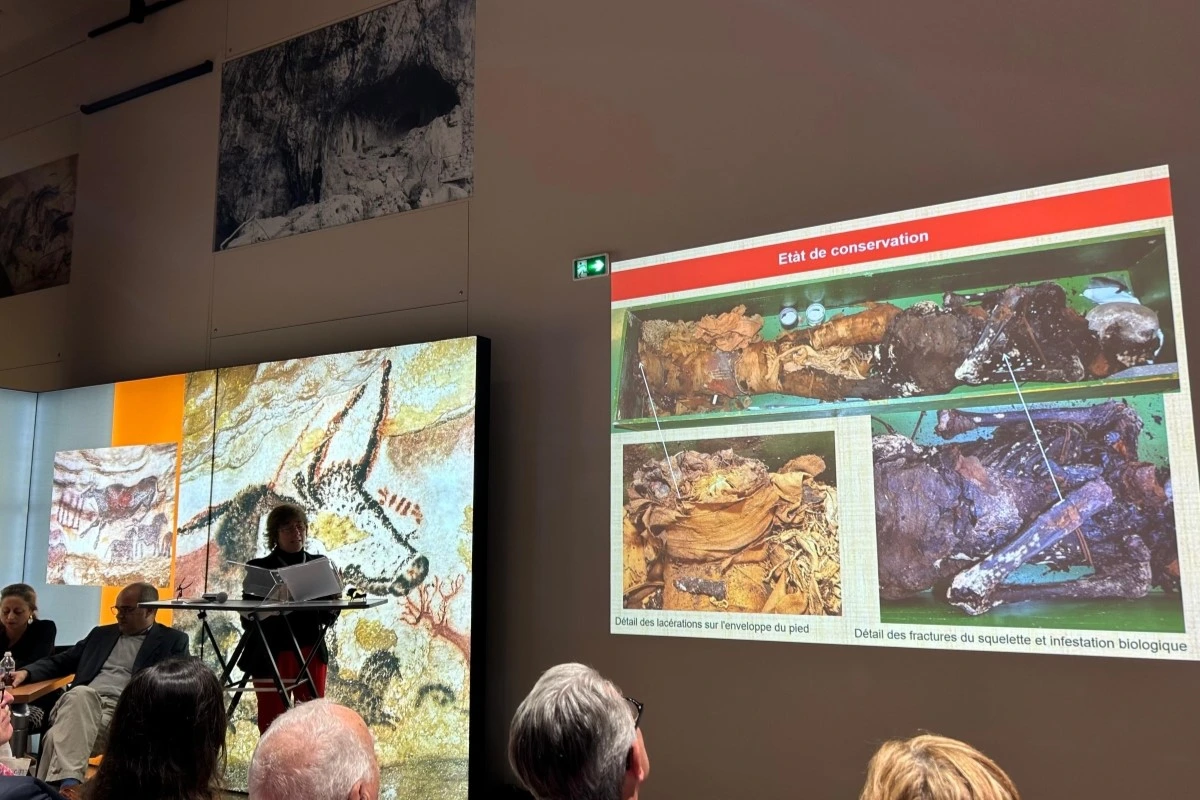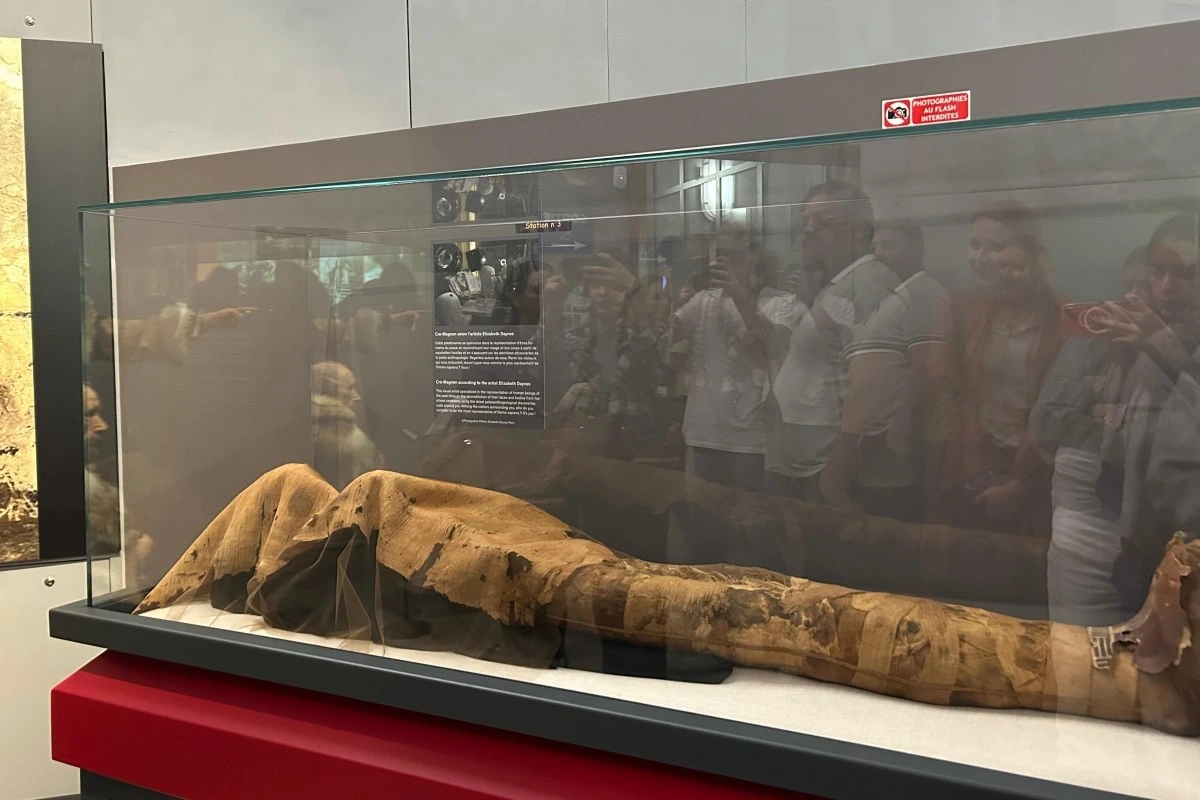Decades after she first came to the Principality and thousands of years since she lived in Ptolemaic Egypt, the mummified remains of a young woman known as Merit have gone on display at the Musée d’Anthropologie Préhistorique de Monaco.
Earlier this month, Monaco Life‘s Niki Borisova attended a special press conference at the museum that revealed new insights into the life of this Ancient Egyptian woman, who has been the subject of a groundbreaking study conducted by specialists at the Centre Hospitalier Princesse Grace and funded by Monaco’s Direction of Cultural Affairs.
Merit, a name that means “beloved” in Egyptian, is believed to have been donated to Monaco’s Museum of Prehistoric Anthropology in the post-WWII era by the Natural History Museum of Nice (Muséum d’Histoire Naturelle de Nice). Merit has been the focus of several studies over the years, and her remains have undergone extensive conservation efforts in an effort to best preserve the 2,300-year-old mummy.

Most recently, in 2016, the decision was taken that the mummy should be examined and scanned by the Radiology Department at the Centre Hospitalier Princesse Grace.
Speaking at the press event, Dr. Philippe Brunner, the head of the department, said, “That day, on 7th June 2016 at 6pm, we received an unusual patient at our hospital.”
Dr. Brunner led the hospital’s efforts to learn more about the mummy and the young woman, who would have been between 20 and 25 years of age when she died.
Merit lived more than two millennia ago at a time when Ancient Egypt was under the rule of the Ptolemies. She was mummified sometime between 360 and 200 BCE.
She measured around 1.70m, somewhat tall for an Egyptian woman at the time, and it is believed that she would have been of high social status due to the nature and method of her mummification. The studies also revealed she likely adhered to a vegetarian diet.
The CT scan and uterine biopsy conducted at the Centre Hospitalier Princesse Grace revealed further details about her health and life, including signs of a tumour and traces of brain tissue, along with post-mortem fractures from the mummification process. These procedures are rarely done on mummies, making this case particularly special and allowing the Monaco team to contribute valuable insights into medical research on ancient remains.
See more: Lascaux in Monaco: Reproduction of the famous cave coming to the Musée d’Anthropologie Préhistorique
Ricardo Lorenzino, Hapax Turin Editorial Director and a museographer who was involved in the research, told Monaco Life, “We have a responsibility to connect this mummy to the cultural context of Egyptian life.”
Elena Rossoni-Notter, the director of the Musée d’Anthropologie Préhistorique de Monaco, added, “We have finally understood the results from the countless studies on the mummy,” noting that future research will include a 3D reconstruction of her face as well as possible efforts in voice regeneration.
Merit was first displayed to the public back in 2022. She is now on display at the Musée d’Anthropologie Préhistorique de Monaco.
Monaco Life is produced by real multi-media journalists writing original content. See more in our free newsletter, follow our Podcasts on Spotify, and check us out on Threads, Facebook, Instagram, LinkedIn and Tik Tok.
Photo by Monaco Life
